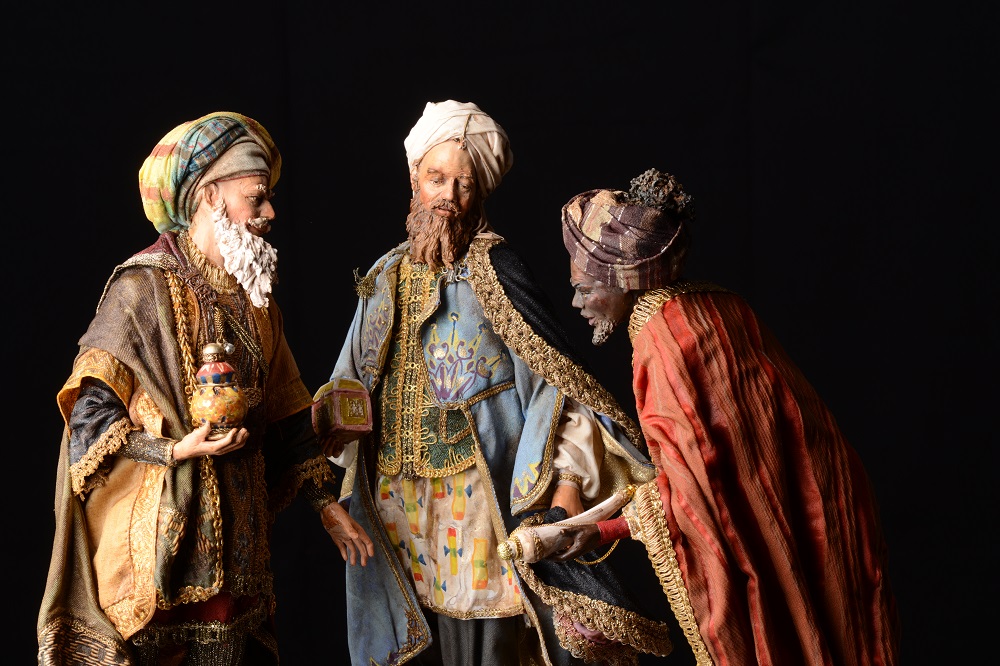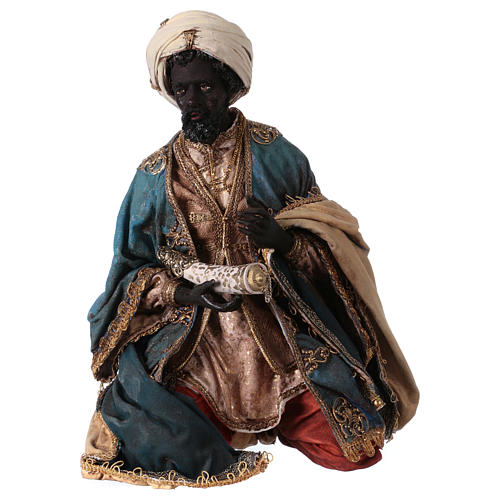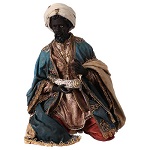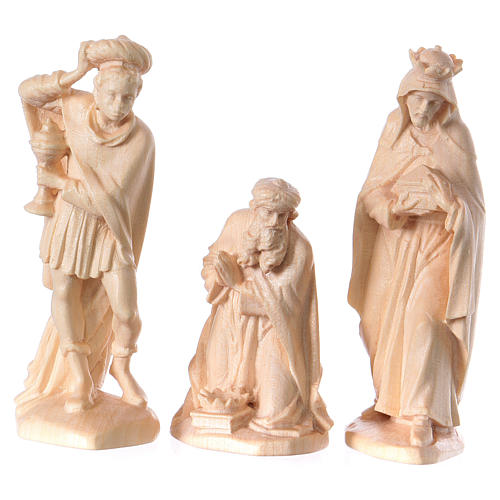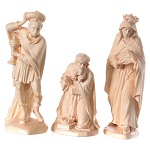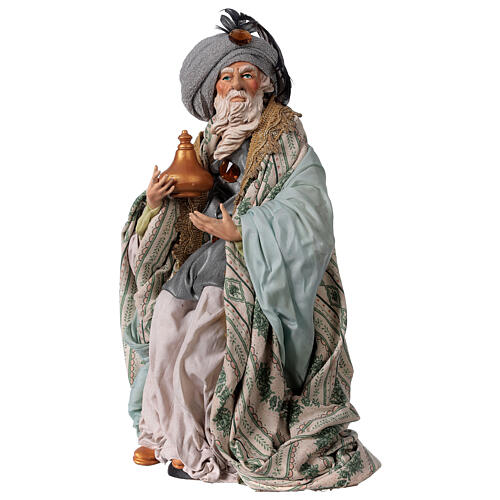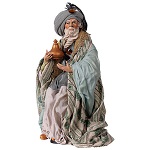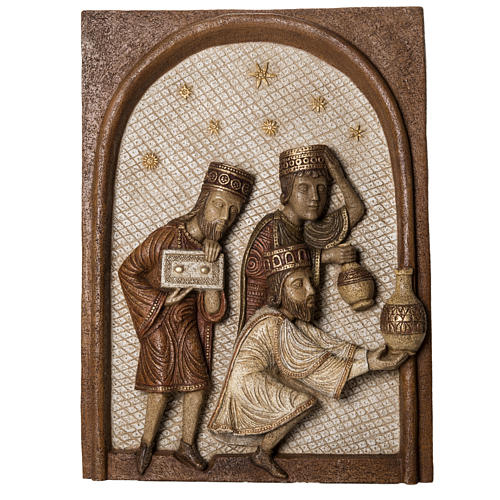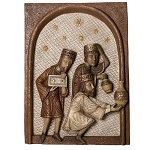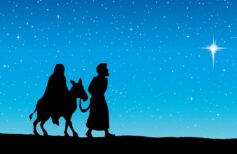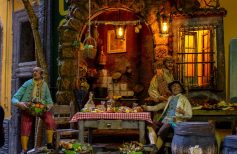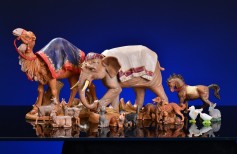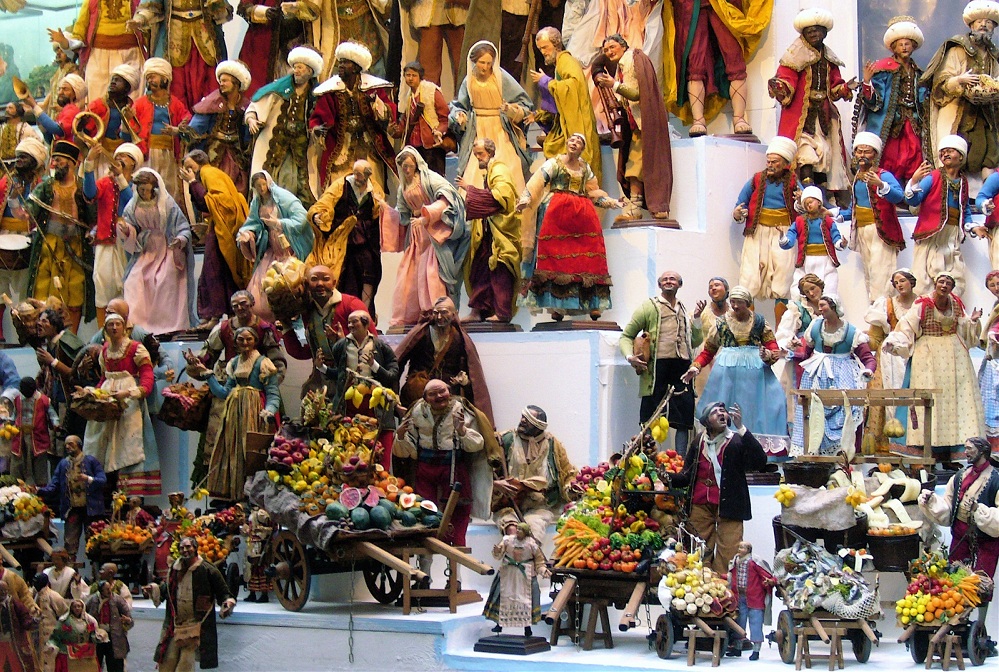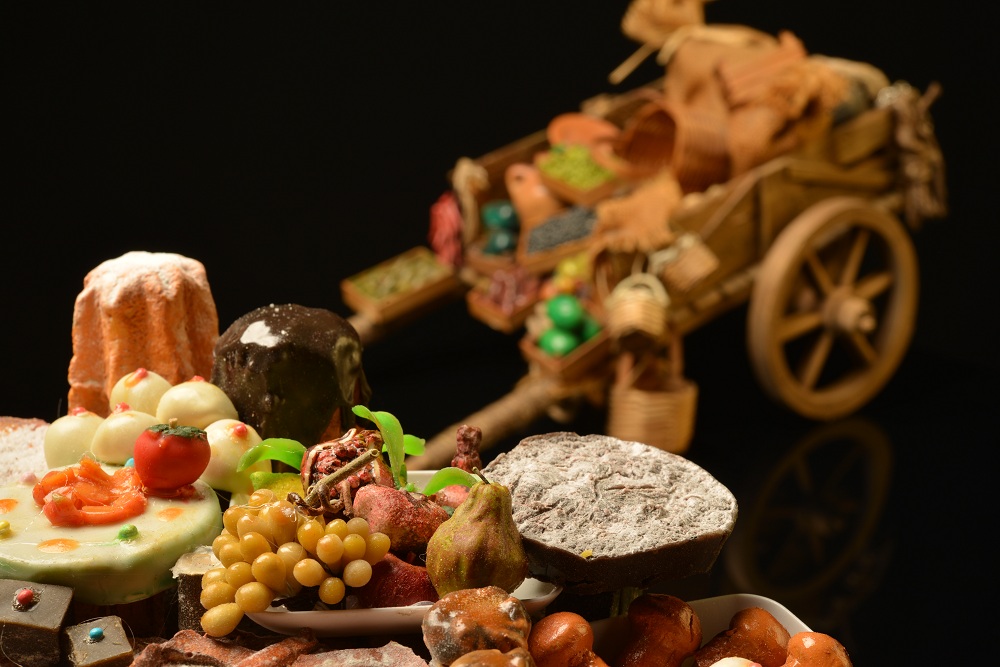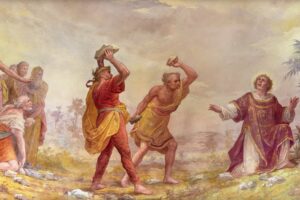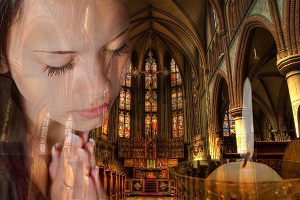We all know the Three Wise Men as the three men who faced a long journey chasing a star with the sole purpose of paying homage to the “King of the Jews”. But, who are these three men? Where do they come from? What is the true meaning of their presence in the Nativity?
Contents
The Wise Men are traditional characters of the Nativity scene, well known and loved by everyone. They stay in the box till the last moment, that is until January 6th, the day they are placed in front of the hut where Jesus was born. They look exotic, which makes them different from any other Nativity character, and are dressed like kings; one of them has often a camel, and offer rich gifts to the Baby: gold, incense and myrrh. Their arrival marks the end of Holidays.
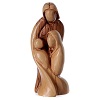
The Wise Men according to the Gospel
The Gospel of Saint Matthew is the only Biblical source that tells their story. The evangelist tells about three Men coming from East to Jerusalem following the lead of a star through the sky. Once they reached King Eros, they asked him where they could find the King of Jews, to worship him. Eros became suspicious, summoned all of his wise men, and found out that the prophet Michea had foreseen the birth of a special and unique baby in Bethlehem long before.
He told the three Men, asking them to go there and inform him about this baby, so that he could homage him as well. The real intention of the evil Eros was to take advantage of the three men to find baby Jesus and kill him before he could endanger his power.
The three went on until the star they followed halted to a stop right above the hut where baby Jesus was resting cradled into Mary’s arms. They entered the hut and kneeled to his feet, calling him King and offering him their precious gifts. They never went back to Eros. A prophetic dream ordered them not to, and so they went back to their homelands taking a different path.
This is the only mention of the Wise Men we can find in the Gospels, but throughout the centuries the Christian tradition enriched these figures with many details, and above all art made them essential characters in the Nativity representations.
Church is divided about that: some recognize the truthfulness of the Gospel and their existence; others consider them secondary and legendary characters. It is a recurrent element in the history of Christianity after all: starting from a Gospel text, meager and essential, a particular event acquires popular elements, legends, folklore traditions, till it gets a new, wider, dimension. Oral tradition and the spread of the story, enriched by more and more details every time throughout the centuries, lead to the consecration of events and characters that become canonical and universally accepted.
Who and what were the Wise Men? What do they symbolize?
The Wise Men are also called “Magi”, which comes from an ancient Persian word: magūsh. The ministers of Zoroaster were called like that in the ancient Persian Empire. It is then possible that the Wise Men were actually wise, maybe even experts of magic arts, or even more likely, they were scientists or educated men, like the scribes for Hebrews, philosophers for the Greeks, and sages for Latins. Wise men then, experts of nature and its secrets. We can also assume that they were astrologists or astronomers, given their particular interest for stars, and especially for the star that guided them. Actually, the star could be interpreted as a symbol taken from the Scripture.
In the book of Revelation 22:16 we can read: “I, Jesus, have sent my angel to give you this testimony for the churches. I am the root and offspring of David, the bright morning star.” A different tradition ties the word “Magi” to the Latin “magis” and the term “magistero”, willing to acknowledge the Wise Men as three masters that with their magic, or just with their wisdom, can see beyond the truth, reveal its light, and share it with all men. This meaning would bring out their merit of being able to recognize the greatest of Kings and savior of the world in a shivering baby in a manger.
Who were the Wise Men? The different theories
Wise then, maybe coming from Babylon, or probably ministers of Zoroaster coming from Persia. In any case, travelers coming from a generic and far East, as their clothes and looking show. Various traditions do not agree about their identity nor their names, even thought the most accredited are Caspar, Balthazar and Melchior. If they were kings, it is certified nowhere.
It’s possible that the addition of these three figures in the Nativity scene was needed, at the beginning, to give it a solemnity and recognition it deserved. You couldn’t let the Son of God be worshipped only by shepherds and farmers: the birth of a Prince deserved the arrival of eminent figures ready to celebrate him. But, since Jesus was unpopular to politic and religious powers during his whole mortal life, this delegation could only come from far away.
The gifts of the Wise Men
They are three foreigners then, three Persian ministers, that recognized the King of Israel in the newborn, to welcome him as only God, because of their studies and their religious knowledge, while the local power, built by Eros and his sages, and the religious power of the Hebrew ministers, not only ignore him, but once they found out about him, they try to eliminate him.
As ministers they brought three gifts: gold, only for kings, with which they acknowledge that Jesus is the King of Kings; incense, always used in religious celebrations, to acknowledge Jesus’ divine nature; myrrh, a plant from which a resin used to produce an oil is extracted, used in the cult of the dead besides medical and cosmetic use, to symbolize Jesus investiture, his consecration to the role of King and God. We remind you that the meaning of Christ is “oiled”.
The names of the Wise Men and their meaning
Concerning the names of the Wise Men, different Western and Eastern catholic churches passed on different versions. Caspar, Melchior and Balthazar are the most accredited according to the Western tradition. Melchior is the oldest, and his name comes from Meloch, “King”; Balthazar probably owes his name to the Babylon king Balthazar; Caspar, or Galgalath, means “Saba’s lord” in Greek. Another tradition says that Balthazar was the King of Arabs, Melchior King of Persia, and Caspar King of India. Nothing is sure though. Just think that Chinese Christians claim that one of them came from China.
Artists gave them recurrent physical traits, which brought in time to a recognized and accepted iconography: Balthazar usually looks like a young African, Caspar is a middle-age Easter man, and Melchior like an old European man. Three completely different types to cover all the continents known at the time, and three different ages that could mean the three stages of a man’s life, to offer a full picture of the human kinds.
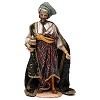
The ability to donate
Beyond the evangelic, historical, folklore traditions that stay with the Wise Men throughout centuries, what we really care to examine here is their human and religious meaning. A raison d’être that goes beyond space and time, the different representations, the countless declinations that were born and developed around these characters.
The Three Wise Men were guided by a shining star. Just from this premise we understand that they were no common men. They were people willing to challenge themselves, to look for a deeper meaning in their lives and the world they lived in. Completely absorbed by this pursuit, they had no hesitation in leaving the safety and wealth of their lands, their homes, and lit only by hope, and started a long and dangerous journey.
Their journey can be seen as a well-fitting metaphor of the interior journey every man faces to overcome their limits and become better persons. The Wise Men, following the light of the star, became light themselves, bringer of a truth hidden beyond reality, of a hope that was more precious than their golden clothes and the jewels they were said to be wearing.
This light, this immense power, is the ability to donate.

Exchanging gifts for Christmas
It’s always nice to receive a gift, especially from someone that loves us and during Christmas, symbol of Jesus’ birth…
We are not talking only about the gifts the Wise Men carried, as precious and meaningful they were under the symbolic and spiritual point of view.
The real gift brought by the Wise Men is in their journey itself, in the dangers they encountered while crossing the desert, in the vastness of nights that were too long, too dark to not make every human heart weaver. They were moved by one dream, the dream of a better world, of a light that could finally give their existences an authentic meaning. They started their journey, pushed by hope and wish to find something better, something good. This is the revealing journey that the Wise Men give Jesus, this journey through their internal desert, their own dark abyss, from which they come out free, purified, ready to be a gift themselves, a gift of endless love. At the same time Jesus is the gift the Wise Men receive, the meeting they were waiting for, for which they had been preparing, maybe without even knowing it, their whole life. Finding Jesus, giving themselves to Him, they receive the greatest of powers, the most inconceivable gift.
Search, understand, and expand our horizons. Facing dangers, overcoming our limits without giving up nor losing hope, even when everything seems to fall apart, even when we feel like everything is useless. Never stop going and follow our star, and while doing that, help others, those we meet along the way, with no reason, no personal profit. Just because they are there, on their journey, even them, maybe more lost, scared and alone in the night than us.
This is the true wealth, the power that makes a common man a king: giving beyond himself, with no interests, expecting nothing in exchange. Giving so much that you feel enriched every time you do that, as if taking away from us to give to others, that simple gesture, would make us accumulate even bigger treasures. The only poverty doesn’t come from what we don’t have, but from what we are not able to give others. All of our anxieties, sacrifices, are nothing compared to the endless Love of God. A love that is only about giving, asking nothing in exchange, with no credit to settle. This love is what all of us should yearn for, the truth that shines bright like a star that should guide our nights. All comes down to this: love and give, make our own existence an act of love, an offer to men and God. That is the only way that will lead us to the beating light beyond reality, the truest and deepest sense of existence. It’s that we will find in a baby crying in a manger the only God, the only, true Love.
Holyart Wise Men
Holyart catalogue offers a wide variety of statues representing the Wise Men. Some of them are part of whole Nativity scenes, others are sold separately. All of the products in the Holyart catalogue concerning the Wise Men are created with great mastery and attention, with multiple styles and materials. Modeled in resin, terracotta, carved in wood, the Wise Men cover all the possible styles for Nativities; they are suitable for Neapolitan Nativities, Val Gardena Nativities, even country style Nativities! Of course there are Wise Men for children’s Nativities, represented as little chubby and happy characters.
Holyart Wise Men are precious and unique pieces, dressed as the tradition demands, ornated with crowns and carrying their gifts in their hands. Some versions also include the camel.
Pieces we are particularly proud of are these superb Wise Men for Nativity scenes that are 120 cm tall. They are made of resin and dressed with fabrics, all hand painted. Carefully detailed, they can adapt to different option of Nativities, and even though they are very big, they are resistant, easy to handle and to move.

